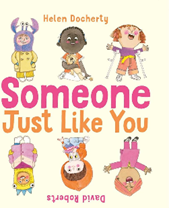The boys by Lauren Ace and Jenny Lovlie
Year 4-5-6 lesson plan
|
Text: The boys by Lauren Ace and
Jenny Lovlie Lesson plan by Andrew Moffat
www.no-outsiders.com |
|
Enquiry question: Am I an island? |
|
RSE objective: How important friendships are in making us feel happy and
secure, and how people choose and make friends. The
characteristics of friendships, including mutual respect, truthfulness,
trustworthiness, loyalty, kindness, generosity, trust, sharing interests and
experiences and support with problems and difficulties. That most
friendships have ups and downs, and that these can often be worked through so
that the friendship is repaired or even strengthened, and that resorting to
violence is never right. |
|
Starter: How would you define
friendship? Is friendship easy? How do friendships change over time? Do you
think friendships are different for boys and for girls? Why? (why not?) Look at the enquiry question; what
do you think it means? What are the characteristics of an island? How can a person
be an island? |
|
Main: Read “The boys” start to
finish and then discuss: ·
The boys are very different from a young age; how are they different?
(personalities / skin colour) ·
“Although they had different interests, the boys were a team. When
they worked together it made all of them better.” How does this work? Can you
think of any examples (boys or girls) in our class? ·
How do we see the boys building their friendship? ·
“One spring the sands had shifted. The winter tides and storms had revealed
hidden rocks and everything was different.” What has happened at this stage
of the book? Is this paragraph just about the beach? ·
Why do you think the boys started competing with each other? ·
“It felt good to be different and think about only what made them
happy” what do you think about this line? In our school we often talk about
being different and we accept ways we are different, but what has happened here?
What are the boys failing to do? (show interest in each other, support one
another, check in) ·
“Their successes, which had once been shared, now felt empty… the boys
knew they had to be able to talk about their feelings… but it wasn’t easy.” Why
not? What’s happened? Is success only success if it is recognized by others? ·
“They came to realise that no boy is an island and the bravest way to
face problems is to talk and listen” what does this mean? How does a person become
an island? ·
What do the boys do to start making their friendships strong again? (learn
to be patient and kind with one another) ·
“When one of them was weighed down by sadness, the others would always
be there to lift him up.” How? What sort of things might they say to each other? |
|
Activity: The book compares the
boys to an island. How do the boys stop being an island? Children draw four circles at the
top of their page to represent islands and draw a boy on each. Give the boys
names and write hobbies that make each one different (use the page in the book
as an example where we see Tam skateboarding, Nattie rock climbing, Rev
playing music, Bobby reading). How do the boys on your page stop
being an island? Below each island write questions
or comments the boys could make about the other hobbies (for example, Tam
could ask Nattie to show him some skateboarding tricks, Rev could ask Bobby
what book he’s reading. The aim is to teach children here how to show an interest
in other people) Next consider what to do if one of
your boys feels sad. Draw them on their island feeling sad but give them a speech
bubble to ask for help – how do you ask for help if you feel sad? If the
other boys notice him feeling sad and he doesn’t say anything, what could
they say? (are you ok? You look sad, mate, everything alright?) Draw your
other three boys around the sad boy on his island showing support and give
them speech bubbles for supportive comments. Finally draw the four boys at the
bottom of the page together, no longer an island. |
|
Plenary: The authors of this book
wrote another story that was published two years previously called “The girls”.
Why do you think the authors chose to do two separate books for boys and
girls? What do you think their aim was in writing this second book? Do you
think that aim has been achieved? What can we learn from this book? |
There is a lesson plan for "The girls" by Lauren Ace and Jenny Lovlie in "No Outsiders: Everyone different, everyone welcome" by Andrew Moffat
www.no-outsiders.com




Comments
Post a Comment